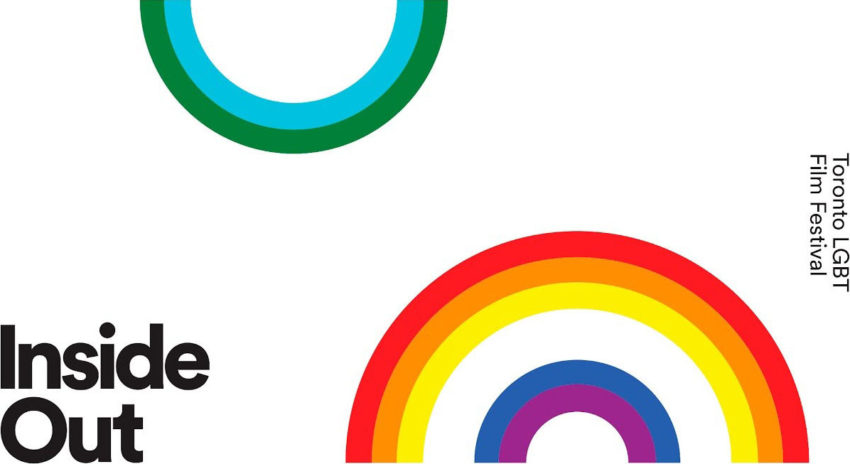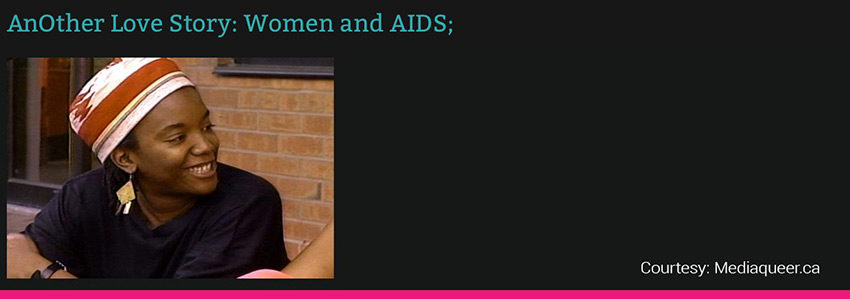By Emily Barton

In 1991, the Inside/Out Collective staged their titular and inaugural film festival. Free from corporate backing, entirely volunteer run, making its home at the Euclid Theatre, 394 Euclid Avenue, March 21st, 1991, the festival began. This series will think through the history of the festival and its operations. Inside/Out’s internal history is just as intriguing as its’ external history. The collective has a strong history of internal criticism, struggles with government and community. In this installment, I will focus on the first year of the festival.
In the spirit of a gay and lesbian film festival, the collective full of volunteers ran the entire festival. This collective nature free from corporate interruption points to a very queer—or gay and lesbian—history of organizing. This is also evident in their film programming. At this time, 1991, queer films were often non-narrative and experimental in nature, whether they were documentary or fiction. Inside/Out’s mission statement in the inaugural year program reads: “Representation of gays and lesbians in the popular media have for many years been inadequate and marginalized. The purpose of the festival, like other festivals of its kind, is to redress the historically inadequate distribution and exhibition opportunities for these works which best reflect our community” (Inside/Out Collective, 1991).
The festival’s first year programming including what we now consider heavy hitters of queer filmmaking. The United State’s late experimental Barbara Hammer, documentarian Jennie Livingston coming off her Sundance win, and the now prolific Gus Van Sant; the UK’s Pratibha Parmar; late Belgian art house director Chantal Akerman; as well as Canada’s own John Greyson and Richard Fung (whom is included in the National Portrait Gallery, as well as in material collections in The ArQuives!). Although I cannot know, I can only guess that these iconic filmmakers and their films put Inside/Out on the map and on the festival circuit in a Big way.

The festivals first year included almost 90 films. Out of the 90, more than half were by women and a significant number were from Canadian, or Quebecois, based filmmakers (note that there is no indication about whether or not any of the filmmakers were indigenous or what First Nations the filmmakers originated in, something that I will return to in subsequent installments of the series). Although the festival had no set thematic, many of the films and videos were concerned with the crisis. In 1991, lifesaving drugs and antiretrovirals, drugs like AZT, were only just becoming widely available. Consequently, some of the festivals programming included safe-sex videos (“GMHC Safe Sex Videos”) and some of the festival’s promotional materials included lube and condoms. Within the HIV/AIDs programming, was Richard Fung’s film Fighting Chance (1991): a documentary about HIV+ Asian men in major cities in Canada and the United States. (To learn more about Richard Fung and his work, you can visit The ArQuives!) Films about the crisis were not limited to gay men, several lesbian and women-loving-women works took up the theme as well. Another Love Story: Women and AIDs, directed by Gabrielle Micallef and Debbie Douglas, a video work out of Canada, also invited lesbians into the safe sex narrative. Dispelling myths about women and AIDs, this thirty-minute video work meditated on community-based healthcare and options for women.

Also included in the programming was the now Iconic, Tongues Untied (dir. Marlon Riggs, 1989). Including Willie Ninja, of the house of Ninja (pictured as well in Livingston’s Paris is Burning (1991)), the film’s voice-over speaks, “There is no tender mercy for men of colour. For sons who love sons, like me” and the film’s rolling intertitles proclaim, “Black men loving black men is the revolutionary act” (underline by author). Riggs passed away from HIV/AIDs related complications in 1994.
Like many collections in the queer archive, Inside/Out’s collection has gaps. Volunteer run, collectively based, learning-as-you-go organizing doesn’t lend itself to the kind of practices of documenting that institutional archiving begets. Instead, as we will see throughout this serial, the Inside/Out archive has gaps, difficulties, and triumphs internally and external. Just like so many of the films it screened, its genre is outside of the norm, like so many of the filmmakers it housed, its materials are lost. What we have to work with is the ephemera. When working with archivist Renee Saucier, the person responsible for the archiving of this collection, I asked what her archival mandate was. She told me that our archive, and other archives of its kind, keeps things that institutional archives do not (condoms, postcards, sticky notes, copies of the same t-shirt ad infinitum). Just like Inside/Out’s mandate in the first year of the festival, The ArQuives strives to “redress the historically inadequate distribution and exhibition” of our communities. Just like Inside/Out, The ArQuives continues!

